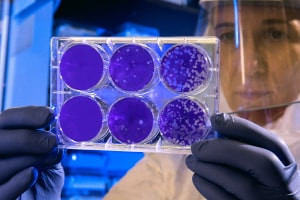The advent of microscopes in the 17th century played a massive role in our understanding of cells and this free online course comprehensively studies various cell biology techniques, especially as it applies to biotechnology. This course will introduce you to prokaryotic and eukaryotic cells and the different applications of these types of cells in scientific experiments. Gain insight into the fact that all these cells are required to propagate before they can be used in scientific experiments and this is done through the use of different growth mediums. You will explore the common media constituents for bacterial growth, their composition and applications. This knowledge gets applied when you are preparing the microbiology medium and the relevant precautions you need to take while carrying out these experiments. You will be introduced to the concept of differential centrifugation, which is based on the differences in sedimentation rates of the biological properties of different sizes, shapes, and densities.
The course starts by introducing you to the fractionation of prokaryotic as well as the eukaryotic cells to isolate a protein from particular cell organelles or parts of a cell. During this process, you will look at the periplasmic fraction, which refers to the fraction that is present between the outer layer and the inner layer in the prokaryotic cells - this is the region where the bacteria stores proteins and this is where you would use the bacteria for over-expression purposes because it will give you the perfect environment for the proper folding of the protein. What are the steps for isolating the periplasmic fraction from the bacteria? This is one of the many exercises you will come to fully understand as you study this cell biology course. You will learn how to isolate cell organelles from the liver, beginning with the process of removing blood from the liver as a way of eliminating any possible contamination by the blood cells.
As you work through this free online Cell Biology Techniques in Biotechnology course content, you will gain insight into how you can use a microscope to localize a particular protein when performing different cell-based experiments and be able to perform immuno-localization studies on a mammalian cell. Finally, you will study the forward scatter channel, the side-scatter channel, phagocytosis, and phagosome and lysosome interactions.
If you are a biotechnology student or already working as a professional in Experimental Biotechnology and want to refine your cell biology skills, then kick-start your learning today with this free online course in cell biology techniques.
What You Will Learn In This Free Course
View All Learning Outcomes View Less All Alison courses are free to enrol, study, and complete. To successfully complete this Certificate course and become an Alison Graduate, you need to achieve 80% or higher in each course assessment.
Once you have completed this Certificate course, you have the option to acquire an official Certificate, which is a great way to share your achievement with the world.
Your Alison certificate is:
- Ideal for sharing with potential employers.
- Great for your CV, professional social media profiles, and job applications.
- An indication of your commitment to continuously learn, upskill, and achieve high results.
- An incentive for you to continue empowering yourself through lifelong learning.
Alison offers 2 types of Certificate for completed Certificate courses:
- Digital Certificate: a downloadable Certificate in PDF format immediately available to you when you complete your purchase.
- Physical Certificate: a physical version of your officially branded and security-marked Certificate
All Certificate are available to purchase through the Alison Shop. For more information on purchasing Alison Certificate, please visit our FAQs. If you decide not to purchase your Alison Certificate, you can still demonstrate your achievement by sharing your Learner Record or Learner Achievement Verification, both of which are accessible from your Account Settings.











 Avg. Hours
Avg. Hours  Contains Video
Contains Video  CPD Accredited
CPD Accredited 
 Total XP:
Total XP: 
 Knowledge & Skills You Will Learn
Knowledge & Skills You Will Learn 







